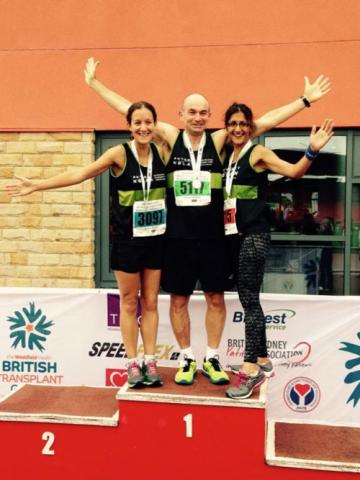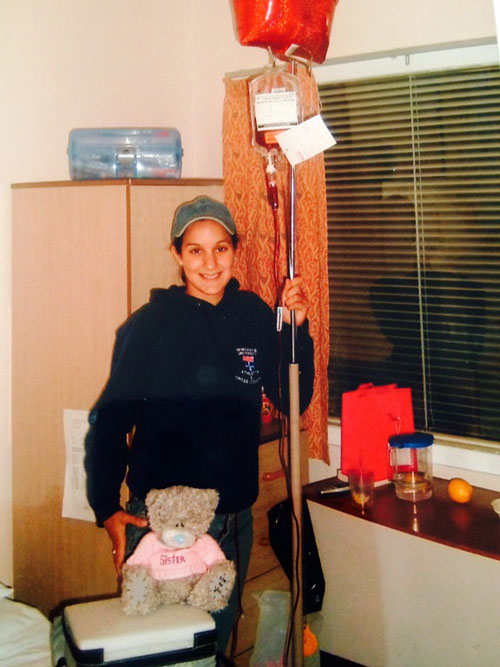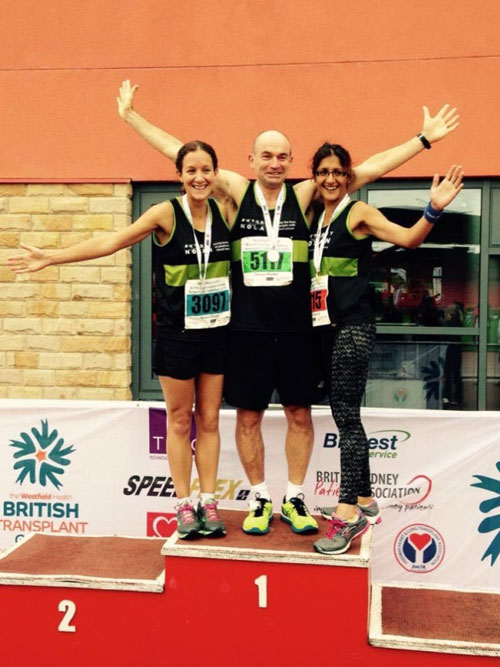In 2002, Nadia, a medical student, received the news that she had aplastic anaemia – and as a result, she’d need a stem cell or bone marrow transplant from an unrelated donor.
In this blog, she tells her story, ahead of World Marrow Donor Day which takes place this Saturday, 19th September.
Nadia's transplant
In 2002, I was a second-year medical student. My end-of-year exams were coming up, and I was feeling tired.
That tiredness stayed with me, and stayed with me – until one weekend, when I was training with Scottish Mountain Rescue, I collapsed halfway up a hill.
As I told my GP, I’d had asthma as a child, so the problem could be that it was coming back. But I thought I might be anaemic as well, so I rolled up my sleeves for a blood test – only to see a heavy bruise on my wrist.
‘What happened to you?’ my doctor asked, baffled.
‘Oh,’ I said, shrugging it off, ‘I must just have slept on my arm.’
A week later, and I hadn’t heard anything more about it, so I called my GP’s surgery back. Apparently they’d been desperately trying to contact me for days! They asked me to come back in for an appointment; not next week, not tomorrow, but that day.
Nadia's diagnosis of Aplastic Anaemia
I was referred to a haematologist, and learned that I had aplastic anaemia – the stem cells in my bone marrow were no longer creating enough blood cells. My haemoglobin count and platelet count were both about 6 (they should have been at least 12 and at least 150, respectively!) which meant I needed to start receiving infusions of blood and platelets straight away.
As treatment continued, and it became increasingly likely that I’d need to have a stem cell transplant, my siblings were checked to see if they were matches. Neither was.
After six months of transfusions, and Christmas spent in a ward, the hospital got in touch with Anthony Nolan, but a preliminary search indicated that there weren’t any matches for me in the UK. As the hunt went worldwide, two potential stem cell donors were found – one in the US, and one in Germany.
In the end, the American donor was chosen as the best possible match. And in August 2003, I had the transplant that saved my life.
I was lucky – I had few side effects, and was in hospital for just six weeks post-transplant, before returning to fulltime studies within a year.
Nadia at the Transplant Games
I’ve been sporty since school; always on every team, taking part in lots of athletics. Even when I was undergoing treatment, I was going to the gym and running half-marathons! (Even if I did need a top-up of blood afterwards.)
I already knew about the British Transplant Games, but until last year, I had no idea that stem cell transplant patients were eligible. Then I saw an Anthony Nolan press release, explaining that the 2015 Games would be taking place in Newcastle (my hometown) so I got in touch with Chiara, Head of the Patient Experience team, about taking part.
I signed up for five events – two running, two swimming, one cycling – and came away with four medals (half silver, half bronze) all in all!
The girl who beat me went to the World Transplant Games this year and won about six medals, so I definitely can’t feel too bad about losing to her!
The next World Transplant Games is taking place in 2017, in Malaga. I still need to qualify at the next British Transplant Games before I’m eligible, but it’d be amazing to go.
Nadia meets her donor
A couple of years afterwards, I got in touch with my donor in the USA, but never heard back. I didn’t really think much more of it, at the time.
But on the 10th anniversary of my transplant, I wrote her a letter; I told her that she didn’t have any obligation to respond, but I was still alive and doing well, all thanks to her.
She got back in touch! Apparently, she hadn’t wanted to reply, because she’d been worried that I might feel indebted to her. We started emailing back and forth.
And then, earlier this year, she let me know that her husband was coming to London for a conference – so would I like to see her?
And so, last week, I met my donor for the very first time. It was a really lovely meeting. She has two young boys, so we visited a lot of museums, Hampton Court Palace, and the London Eye, and we had a long chat and figured out the mutual ancestry that must have led to our being a genetic match for one another. We even look quite similar, which is weird!
I’m Jewish, so I do feel really lucky to have found a donor – it’s much harder, generally speaking, for people with minority heritage to find a match. And I’m luckier still to have had so few problems with long-term side effects.
It’s been a busy life since my transplant. I’m a registrar now, after a year living in New Zealand, and it’s only another year until I make consultant.

So I have a lot to look back on – and a lot to look forward to, as well.
If you'd had a transplant and you'd like to get more information about meeting your donor, visit our website here
For more information about bone marrow and stem cell transplants, visit the patients and families section of our site here
If you're aged 16–30, you can sign up as a potential bone marrow donor by clicking on the link below.



